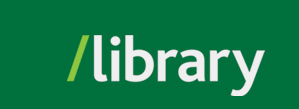We have a detailed guide on different types of periodical
Look for the following characteristics when you search for scholarly articles:
Author affiliation: Authors are usually researchers affiliated with educational institutions
Source documentation: There is often a list of references documenting where the information is from
Editorial Process: Should be reviewed by other experts in the field
Purpose: Ideally, to present research or experimental findings
Structure: Usually includes an abstract. For empirical research articles, research or survey methodology should be included, followed by the key results of findings
Here is an example of a scholarly article:

After the long list of authors, there is an Affiliation section, which shows the researchers’ respective institutions.
The Source section shows the title of the journal.
The Abstract section summarises the motivation behind the research, and its findings.
Below is a screen capture of the top four references that are cited by this article:
Look for the following when you are evaluating professional or news media sources:
Author affiliation: Authors are usually staff writers affiliated with a professional or news organization, including think tanks and polling agencies. You can do a quick internet search on the author’s background and any political leanings. It’s also worthwhile doing the same research on the institution itself.
Source documentation: While references are typically not included, staff writers will often mention reports or studies they have cited. You can look up these articles and evaluate to see if the research has been interpreted fairly. You can also look for the bias in the report/research they have cited.
This also allows you to find more information on the topic.
Editorial Process: Look for a publication that has an editorial board with an established journalistic code of conduct. These organizations are more likely to have fact-checkers to oversee the quality of their information. These organizations are more likely to have fact-checkers to oversee the quality of their information. For example, here’s a link to the CBC’s Journalistic Standards and Practices (JSP):
© , University of the Fraser Valley, 33844 King Road, Abbotsford, B.C., Canada V2S 7M8

